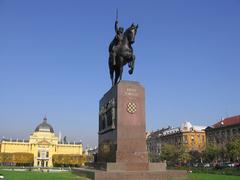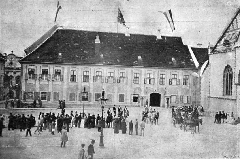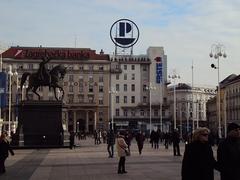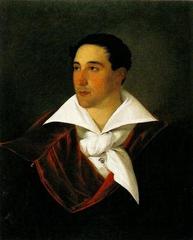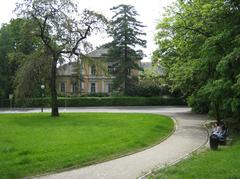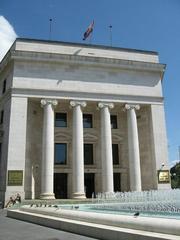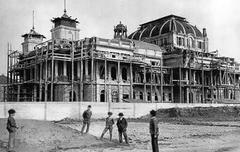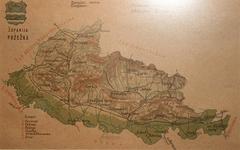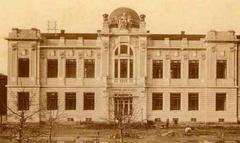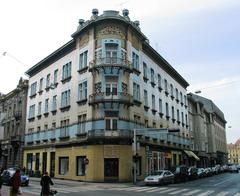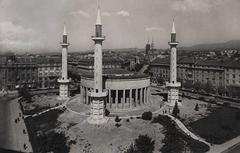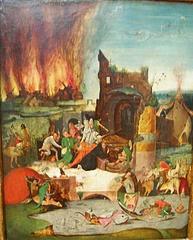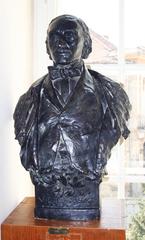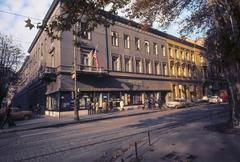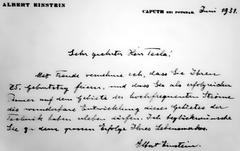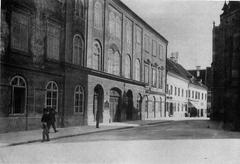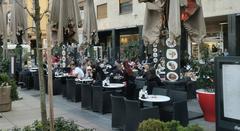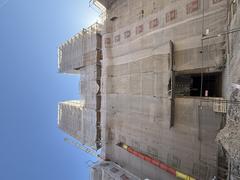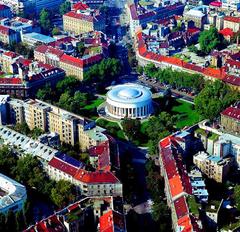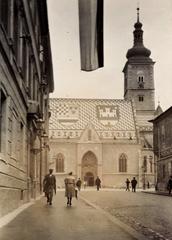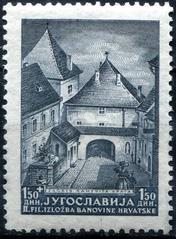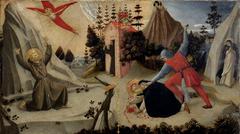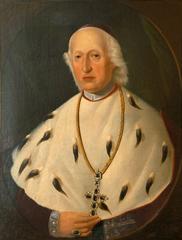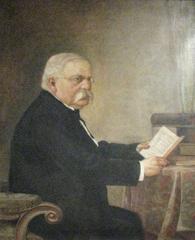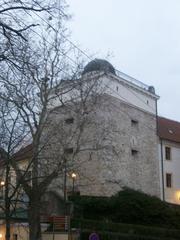
Archaeological Museum of Zagreb: Visiting Hours, Tickets, and Travel Guide
Date: 14/06/2025
Introduction: A Window into Croatia’s Heritage
The Archaeological Museum of Zagreb stands as one of Croatia’s foremost cultural and scholarly institutions, preserving a legacy that spans more than 2.5 million years. Housed in the historic Vranyczany-Hafner Palace on Zrinski Square, the museum is a testament to the country’s vibrant archaeological tradition and dynamic role at the crossroads of European civilization. With over 450,000 artifacts, it is among Southeast Europe’s largest repositories of ancient material culture.
The museum’s collection includes world-renowned highlights such as the Zagreb Mummy and its Etruscan-inscribed linen wrappings (Liber Linteus Zagrabiensis), the Vučedol Dove symbolizing the Copper Age, and the rare Lumbarda Psephisma from Greek colonial times. Visitors can journey from prehistoric stone tools to medieval Christian relics, Egyptian mummies, and Roman military equipment—all within a building that is itself an architectural gem.
Despite challenges like the 2020 earthquake and ongoing renovations, the museum remains a hub for research, education, and public engagement. Temporary exhibitions, educational programs, and digital resources keep its spirit alive during restoration. Its central location and accessibility by tram make it an essential stop for anyone exploring Zagreb’s rich history. For up-to-date information, always refer to the official museum website.
(Archaeological Museum of Zagreb: Visiting Hours, Tickets, and Historical Highlights, Smithsonian Magazine, The Crazy Tourist)
Contents
- Discover the Archaeological Museum of Zagreb
- History and Development
- Collection Highlights
- Zagreb Mummy and Linen Book
- Vučedol Dove
- Lumbarda Psephisma
- Egyptian, Greek, and Roman Collections
- Numismatic Collection
- Visitor Information: Hours, Tickets, Accessibility
- Modernization and Restoration
- Special Events and Educational Programs
- Role in Croatian Culture and Scholarship
- Frequently Asked Questions (FAQ)
- Travel Tips and Nearby Attractions
- Visuals & Media Recommendations
- Internal Links
- Sources
Discover the Archaeological Museum of Zagreb
Situated in central Zagreb, the Archaeological Museum offers a unique exploration of Croatia’s ancient, classical, and medieval past. Whether you’re a history enthusiast, a student, or a first-time visitor, this guide details everything you need to plan your trip—from essential visitor information to must-see artifacts.
History and Development
Origins
The museum traces its beginnings to the National Museum, founded in 1846, which marked the dawn of public museum culture in Croatia. Initially combining natural history and archaeology, it came under the Croatian Parliament’s patronage in 1866 and began to expand its collections through excavations and donations.
Independence and Growth
In 1940, following the dissolution of the National Museum, the Archaeological Museum became independent and, since 1945, has occupied the Vranyczany-Hafner Palace. Its collections grew rapidly after World War II, now encompassing more than 450,000 artifacts, making it a leading archaeological institution in the region.
Collection Highlights
Zagreb Mummy and Linen Book (Liber Linteus Zagrabiensis)
- Discovery: The Zagreb Mummy arrived in the city in 1848 from Alexandria. Scholars later recognized the linen wrappings as the Liber Linteus—the world’s longest Etruscan text, dating to the 3rd century BCE (Smithsonian Magazine).
- Significance: This artifact bridges Egyptian and Etruscan cultures and remains a focus of international research (The Crazy Tourist).
- Display: Both the mummy and linen manuscript are presented in climate-controlled cases.
Alt text: “Zagreb Mummy and Liber Linteus on display at the Archaeological Museum of Zagreb”
Vučedol Dove
- Description: A 4,000-year-old ceramic vessel shaped like a bird, discovered near the Danube in 1938.
- Cultural Importance: Icon of the Vučedol culture (c. 2500 BCE) and a national symbol (The Crazy Tourist, Smithsonian Magazine).
Alt text: “Vučedol Dove ceramic artifact at the Archaeological Museum of Zagreb”
Lumbarda Psephisma
- Artifact: An ancient Greek stone inscription from Korčula, detailing the establishment of a Greek colony in the Adriatic (Smithsonian Magazine).
Other Collections
- Egyptian Collection: The only one of its kind in Croatia, with mummies, sarcophagi, and everyday objects.
- Greek and Roman Artifacts: Marble statues, mosaics, pottery, inscriptions, and military gear.
- Medieval Collection: Early Christian relics, jewelry, weapons, and epigraphic stones.
- Numismatic Collection: Over 260,000 coins, medals, and banknotes from ancient to modern times.
Visitor Information
Opening Hours (as of June 2025)
- Temporarily Closed due to renovation (WhichMuseum).
- When open, typical hours:
- Tuesday to Sunday: 10:00 AM – 6:00 PM
- Closed Mondays
Always check the official museum website for current information.
Ticket Prices (pre-renovation)
- Adults: 40 HRK (~€5.5)
- Students/Seniors: 20 HRK (~€2.7)
- Children under 7: Free
- Family and group discounts available
- Free admission on the first Sunday of every month
Accessibility
- Wheelchair accessible, with elevators and ramps.
- Audio guides and brochures available in multiple languages.
Location & Getting There
- Address: Trg Nikole Šubića Zrinskog 19, Zagreb
- Transport: Easily accessed by tram (lines 1, 6, 11) and on foot from major city landmarks.
Guided Tours
- Free guided tours (previously every Saturday at 3 PM) and group tours available by advance booking.
- English-language tours can be arranged (Absolute Croatia).
Photography
- Permitted for personal use without flash; restrictions may apply to certain exhibits.
Modernization and Restoration
The 2020 earthquake damaged both the museum building and key artifacts. A €2 million restoration—with further upgrades planned—has focused on structural safety, climate control, accessibility, and digital interpretation. As of mid-2025, the museum remains closed for these essential works, but temporary exhibitions and educational programs continue off-site and online (Museu.ms).
Special Events and Educational Programs
- Temporary Exhibitions: Rotating displays offer access to highlights during renovation.
- Workshops and Family Programs: Interactive sessions for children and school groups.
- Virtual Tours: High-quality digital content is available on the museum website.
Role in Croatian Culture and Scholarship
The museum is central to the preservation and interpretation of Croatia’s archaeological heritage. It supports academic research, trains specialists, and collaborates with international institutions. Through its exhibitions and outreach, it strengthens national identity and public appreciation of history.
Frequently Asked Questions (FAQ)
Q: Is the museum open to the public?
A: As of June 2025, the museum is temporarily closed for renovation. Check the official website for updates.
Q: What are the typical visiting hours?
A: When open: Tuesday to Sunday, 10:00 AM – 6:00 PM; closed Mondays.
Q: How much are tickets?
A: Adults: 40 HRK; students and seniors: 20 HRK; children under 7: free. Always verify current prices online.
Q: Is the museum wheelchair accessible?
A: Yes, facilities are available for visitors with disabilities.
Q: Are guided tours available?
A: Yes, including English-language tours (pre-booking recommended).
Q: Can I visit related sites during closure?
A: Yes, archaeological parks like Scitarjevo (Andautonia) and Varaždinske Toplice are managed by museum staff and remain accessible.
Q: How can I stay informed?
A: Follow the museum’s website and social media for reopening announcements and event updates.
Travel Tips and Nearby Attractions
- Visit neighboring sites like Zrinjevac Park, the Croatian National Theatre, and the Museum of Broken Relationships.
- Use public transport to avoid parking difficulties in central Zagreb.
- Explore temporary exhibitions and digital resources during the museum’s closure.
- Combine your visit with walking tours of Zagreb’s historic center.
Visuals & Media Recommendations
- Feature images of the Zagreb Mummy, Vučedol Dove, and Lumbarda Psephisma.
- Include photos of the museum’s façade and galleries (with alt text for accessibility).
- Link to virtual tours and video content on the museum’s official site.
- Embed an interactive map of the museum’s location.
Internal Links
Sources and Further Reading
- Archaeological Museum of Zagreb: Visiting Hours, Tickets, and Historical Highlights
- Smithsonian Magazine
- WhichMuseum
- Museu.ms
- Greek Personal Names in Dalmatia: A Lexicon
- The Tourist Checklist
- The Crazy Tourist
- Absolute Croatia
Summary and Visitor Recommendations
The Archaeological Museum of Zagreb is a cornerstone of Croatian heritage, offering a compelling journey across millennia. Its vast collections, including the celebrated Zagreb Mummy and Vučedol Dove, provide profound insight into regional and European history. Despite its temporary closure for renovation, the museum continues its mission through research, outreach, and digital initiatives.
Plan your visit by checking official updates, exploring related archaeological parks, and using resources like the Audiala app for guided tours and real-time information. The museum’s central location makes it ideal for combining with other attractions in Zagreb’s vibrant cultural landscape.
For reopening news, events, and digital content, visit the official museum website and follow on social media. Immerse yourself in Croatia’s archaeological legacy—whether in person or online—by making the Archaeological Museum of Zagreb a highlight of your travel itinerary.
(Archaeological Museum of Zagreb: Visiting Hours, Tickets, and Historical Highlights, WhichMuseum, Museu.ms)

